Sociology > QUESTIONS & ANSWERS > CCM exam prep - all topics 2022 Questions and Answers (All)
CCM exam prep - all topics 2022 Questions and Answers
Document Content and Description Below
Case management - ANSWER a collaborative process that assesses, plans, implements, coordinates, monitors and evaluates the options and services required to meet the client's health and human services ... needs. Case Management Characteristics - ANSWER characterized by advocacy, communication, and resource management and promotes quality and cost-effective interventions and outcomes. Glagow Coma Scale - ANSWER Client assessment tool that measures level of coma in the acute phase of injury it is an objective way of recording the conscious state of a person. Eye opening, Best verbal, best motor. < 8 coma, 13-15 mild injury. Strengths Based Model - ANSWER assesses clients capacities and potential resources as well as problems and current unmet needs. Eliciting capacities and potential resources as well as problems and current unmet needs. Independent Living Model - ANSWER sees a disability as a construct of society Medicare Prospective Payment System - ANSWER hospitals paid a pre-determined rate for each Medicare admission. Each patient is classified into a DRG. PHQ-9 - ANSWER Client assessment tool for depression Braden Scale - ANSWER Client assessment tool for pressure sore risk Clinical Pathway - ANSWER Structured multidisciplinary CM plan designed to support the implementation of specific clinical guidelines and protocols. They are maps that guide the healthcare team on usual treatment patterns related to common diagnoses, conditions and procedures e.g., CHF SF-36 - ANSWER Client assessment tool to measure physical and mental health. Medicare - ANSWER Established in 1965 under Title XVIII or Social Security Act. Four Parts A-hospital insurance, B-medical insurance (doctors visits), C-Medicare Advantage program in a private plan such as HMO, D-prescription drug benefit Medicare Benefits and Cost Sharing - ANSWER Not covered are: Acupuncture, chiropractor, cosmetic, custodial home care, dental care, DME convenience, hearing aids, eyeglasses, foot care, meals on wheels, personal convenience, prescription drugs, private nurses, routine physical, vision areas of accountability of case management - ANSWER clinical/outcome financial functional/outcome satisfaction behavior process *episode or continuum **individual or population Measuring performance: Process - ANSWER The measure of how many pts receive a treatment or service i.e. vaccinations, screenings, ex. diabetic foot exam ALSO practitioner's practice conforming to practice standards. Measuring performance: Functional outcome - ANSWER The measure reflects the health state of a patient as a result of health care ex. increased independency in ADLs, mobility Measuring performance: Clinical outcome - ANSWER The measure reflects the health state of a patient as a result of health care ex. blood pressure goals ex. HgA1c level, wound healing Measuring performance: behavioral 'process' - ANSWER ex. self-monitoring of blood sugar Measuring performance: Financial - ANSWER ex. fewer ED visits, ALOS decreased Women's Health and Cancer Rights Act of 1998 - ANSWER 1. Part of Omnibus Appropriations Bill. 2. required group health plans to provide coverage for mastectomies and provide certain reconstructive related services following mastectomies. Women's health and cancer rights act coverage - ANSWER 1. reconstruction of the breast. 2. surgery and reconstruction of the other breast 3. breast prothesis 4. treatment for physical complications attendant to the mastectomy Women's health and cancer rights act prohibitions - ANSWER Health plans are not allowed to deny anyone coverage for the sole reason of avoiding the requirements of the act AND cannot induce a physician to limit the care that is required under the act by penalizing or limiting reimbursement to the physician. Can states modify HIPAA's portability requirement - ANSWER Yes. HIPAA requirements do not supercede state requirements. Stricter laws prevail. States can 1. shorten the 6 month look back period. 2. shorten 12 month maximum pre-existing condition exclusion period.3. increase the 63 day/significant break in coverage 4. increase 30 day period for newborns, adopted children, children placed in adoption and pregnant women. 5. Expand the prohibitions on conditions and people to whom a pre-existing condition exclusion period may be applied beyond exceptions. 6. reduce additional special enrollment periods. 7. reduce maximum HMO affiliation period to less than 2 months. Break in coverage - ANSWER 63 days or longer that a subscriber has been without health insurance coverage (not including waiting periods) Waiting period - ANSWER period of time specified by health insurance contract that occurs between signing up for insurance and the beginning of health insurance coverage. Cannot be counted as creditible coverage time. Individuals can use COBRA from their previous employers for health insurance Establishing waiting period - ANSWER HIPAA does not prohibit plans from establishing a waiting period. But the waiting period and the pre-existing conditions exclusions must start at the same time and run concurrently. Creditable Coverage - ANSWER For the purpose of the Health Insurance Portability and Accountability Act, coverage under virtually any type indivual or group health care plan without a break in coverage of 63 days or more. Cannot be taken into account when determining a significant break in coverage. Only coverage after the 63 day break will be counted. Any coverage before the 63 day break will not be considered. COBRA - ANSWER Consolidated Omnibus Budget Reconciliation Act; law to provide terminated employees or those who lose insurance coverage because of reduced work to be able to buy group insurance for themselves and their families for a limited amount of time. Certification of creditable coverage - ANSWER Documentation that is provided automatically by the plan or issuer when the individual loses coverage or becomes entitled to elect COBRA continuation coverage and when an individual's COBRA continuation covearage ceases ; Be provided if requested before loss of coverage or within 24 months of loss of coverage. May be provided through use of model certificate Nondiscrimination requirements - ANSWER Inividuals cannot be excluded from coverage under the terms of the plan based on specified factors related to health status. Health plans cannot establish rules of eligibility based on healht status related factors" such as health status, medical condition, claims experience, receipt of health care, medical history, genetic information, evidence of insurability or disablity. Insurer cannot drop a patient from coverage because it knows that the patient will require a liver transplant next year. Cannot charge more for premiums based on health status. Security of health information and electronic signature standards - ANSWER provides a uniform level of protection of all health information that is housed or transmitted electronically. pertains to the individual. Tax Equity and Fiscal Responsibility ACT of 1982 - ANSWER the purpose of this act is to control the rising cost of providing health care services to medicare beneficiaries and has incentives for cost containment. The act:1. established a case based reimbursement system (DRG) payment system determined the cost of care for selected diagnoses while also placing limits on rate increases in hospital venues. 2. Exempted medical rehabilitation from DRGs. Rehabiliation would continue as a cost based reimbursement system with limits. 3. Amended social security act so that group health plans pay before medicare for active employees 65-69 years old and for their spouses in the same age group. 4. revised Age discrimination act by requiring employers to offer health benefits to active employees 65-69 and their spouses in the same age bracket. 5. establish peer review organizations to reduce costs associated with the hospital stays of medicare and medicaid patients. Also established hospice benefit. The Mental Health Parity Act of 1996 - ANSWER A statute that forbids health plans from placing lifetime or annual limits on mental health coverage that are less generous than those placed on medical or surgical benefits. Excluded substance abuse. If a plan does cover mental health, it cannot set a separate dollar limit from medical care. Other limits allowed: limited number of annual outpatient visits; Limited number of annual inpatient days; a per visit fee; Higher deductibles and copayments without parity in medical and surgical benefits. If a parity would require an increase of 1% or more in its health care costs, the plan would be exempt. The Pregnancy discrimination act - ANSWER is an amendment to Title VII stating that employment discrimination based on pregnancy, childbirth, or related medical conditions is prohibited as a form of sex discrimination Newborns and Mother's Health Protection Act of 1996 - ANSWER Health plans may not restrict benefits for any hospital length of stay in connection with child birth for new born or her bother to less than 48 hours following a normal vaginal delivery or less than 96 hours following a delivery by cesarean section. They may not require providers to request for authorization for up to 48/96 hours . May not increase an individuals coinsurance for any later portion of a 48 hour /96 hour hospital stay. 3. they cannot provide monetary payments to encourage a mother to accept less than minimum protections available under NMHPA. They cannot penalizeor other wise reduce or limit the reimbursement of an attending provider because the provider furnished care to a mother or newborn in accordance to NMHPA. They cannot provide monetary or other incentives to an attending provier to induce the provider to furnish care to a mother or new born in a manner inconsistent with the NMHPA. The Mental Health Parity and Addiction Equity Act of 2008 - ANSWER MHPAEA preserves the MHPA protections and adds significant new protections, such as extending the parity requirements to substance use disorders. Although the law requires a general equivalence in the way MH/SUD and medical/surgical benefits are treated with respect to annual and lifetime dollar limits, financial requirements and treatment limitations, MHPAEA does NOT require large group health plans or health insuran [Show More]
Last updated: 1 year ago
Preview 1 out of 66 pages
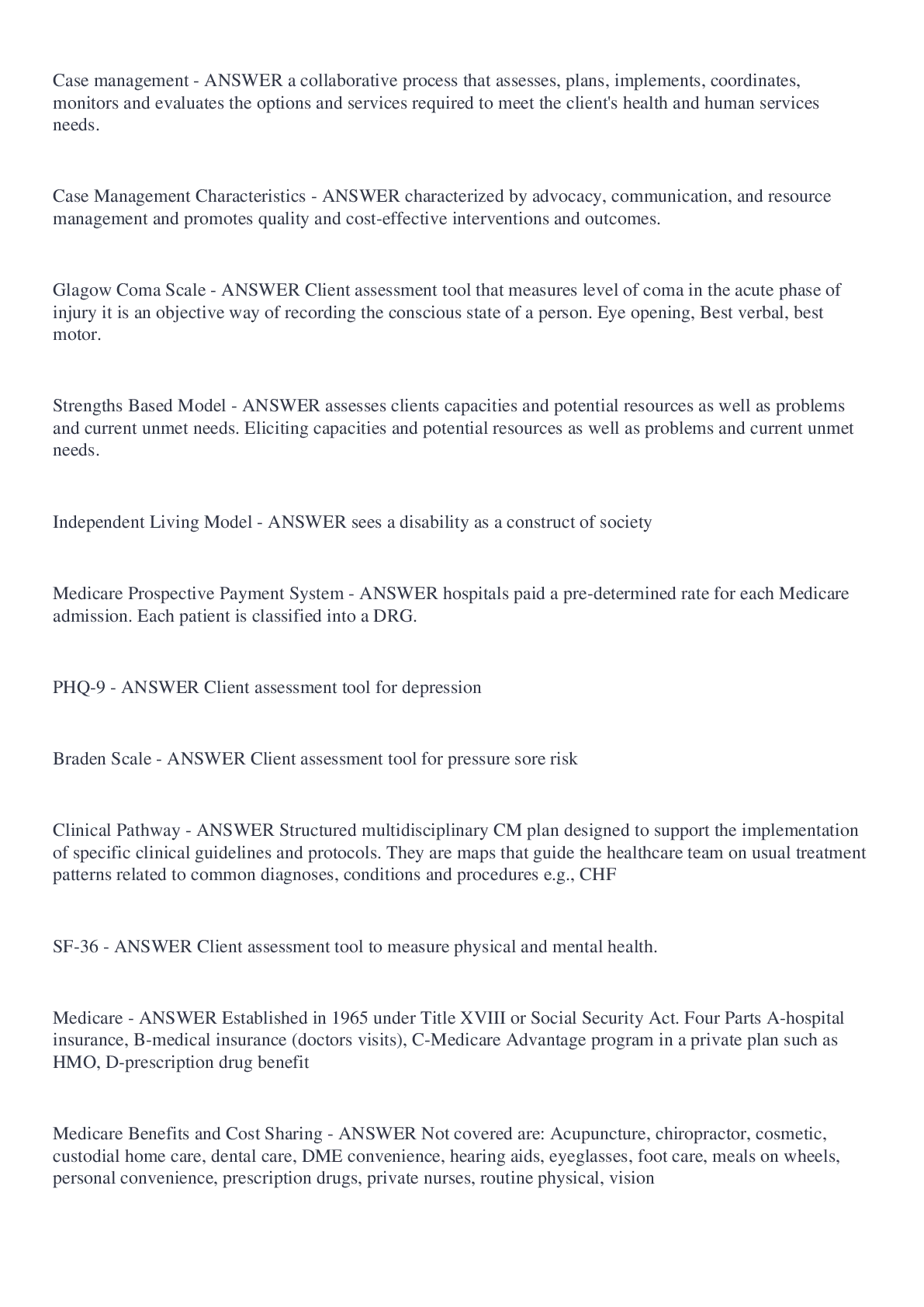
Also available in bundle (1)
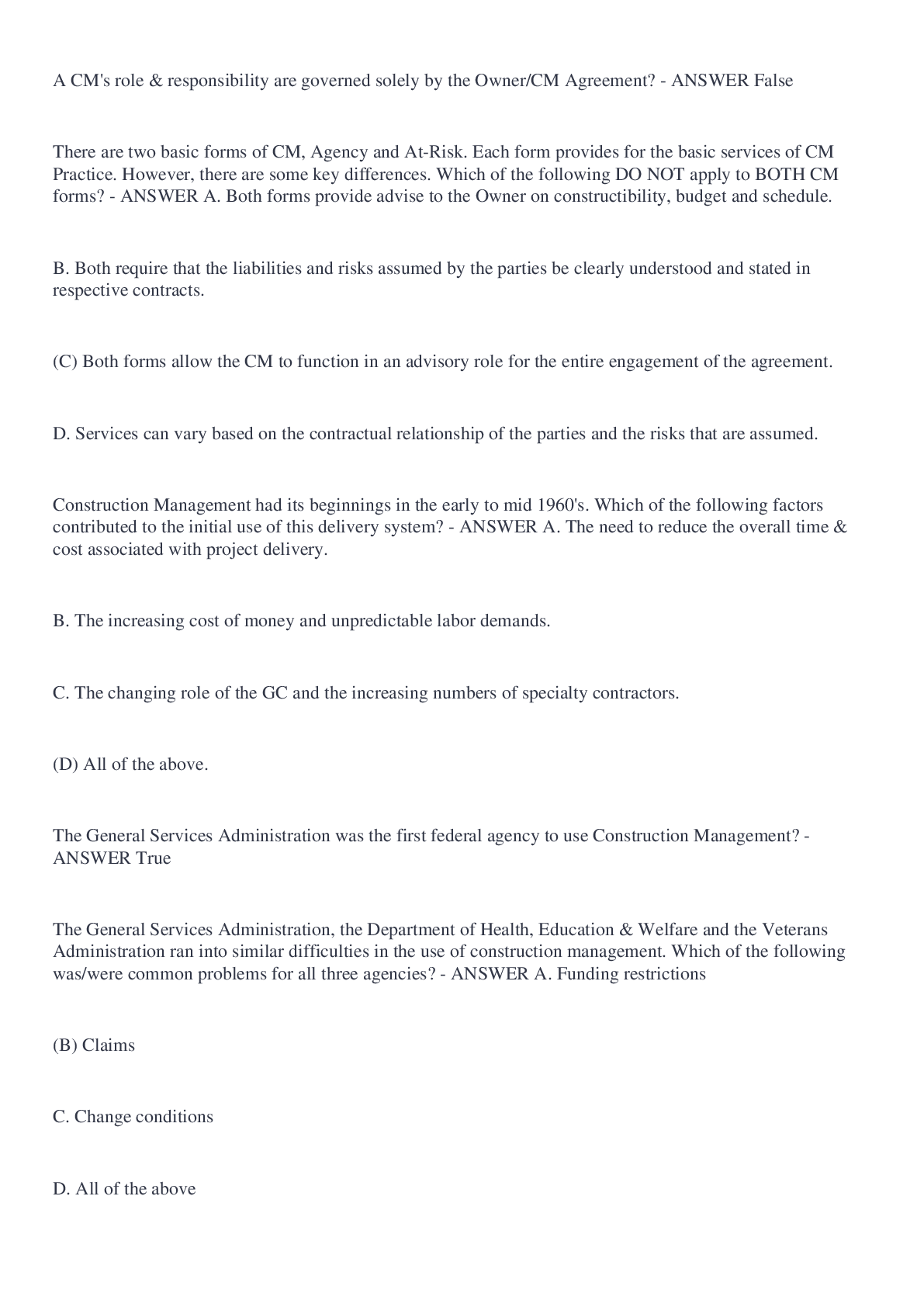
CCM exam prep Bundled full pack questions and answers
CCM EXAM PREP 2022 with complete solutions CCM exam prep - all topics 2022 Questions and Answers
By MARKALLAN 1 year ago
$9.5
2
Reviews( 0 )
Document information
Connected school, study & course
About the document
Uploaded On
Aug 06, 2022
Number of pages
66
Written in
Additional information
This document has been written for:
Uploaded
Aug 06, 2022
Downloads
0
Views
55


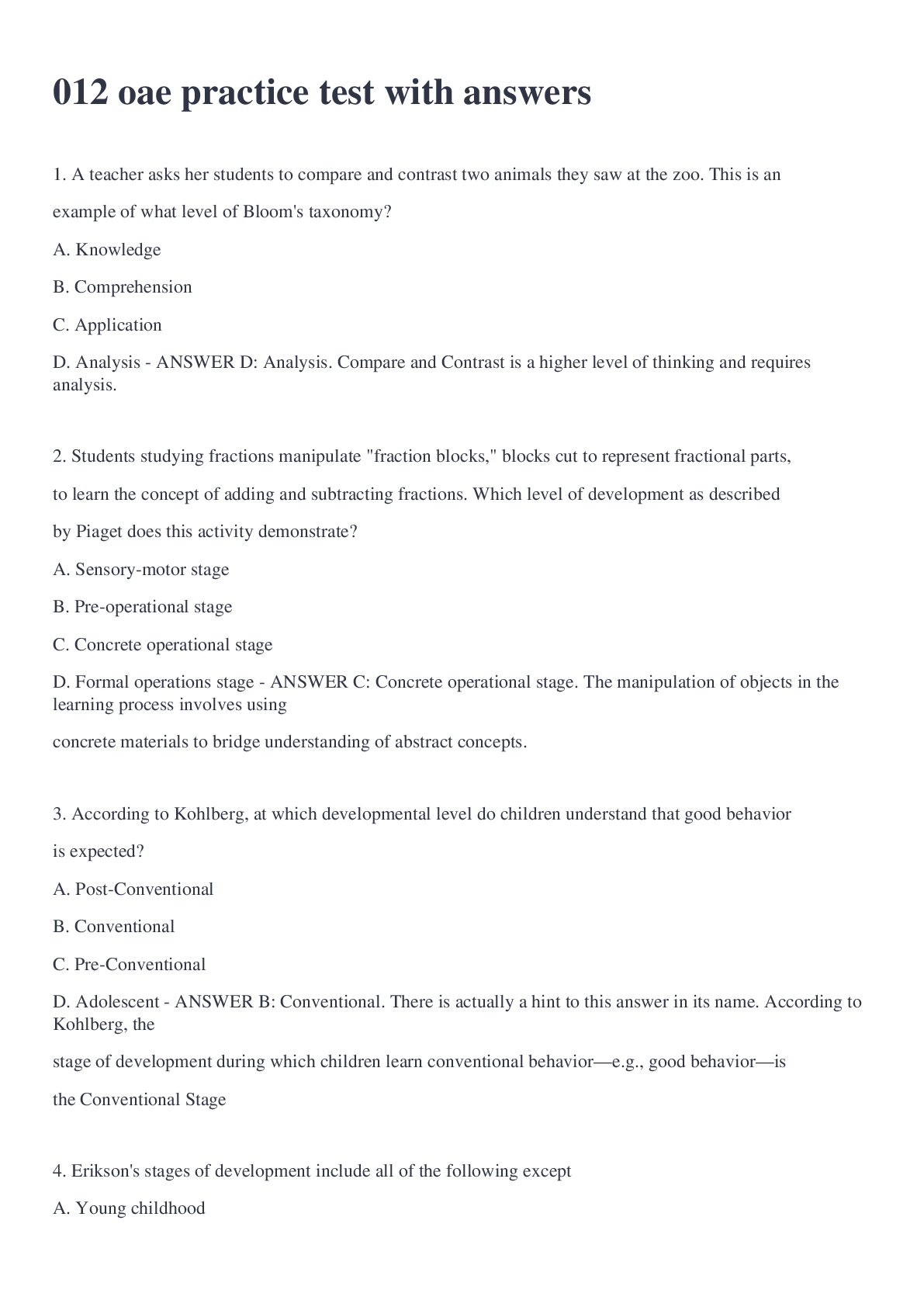
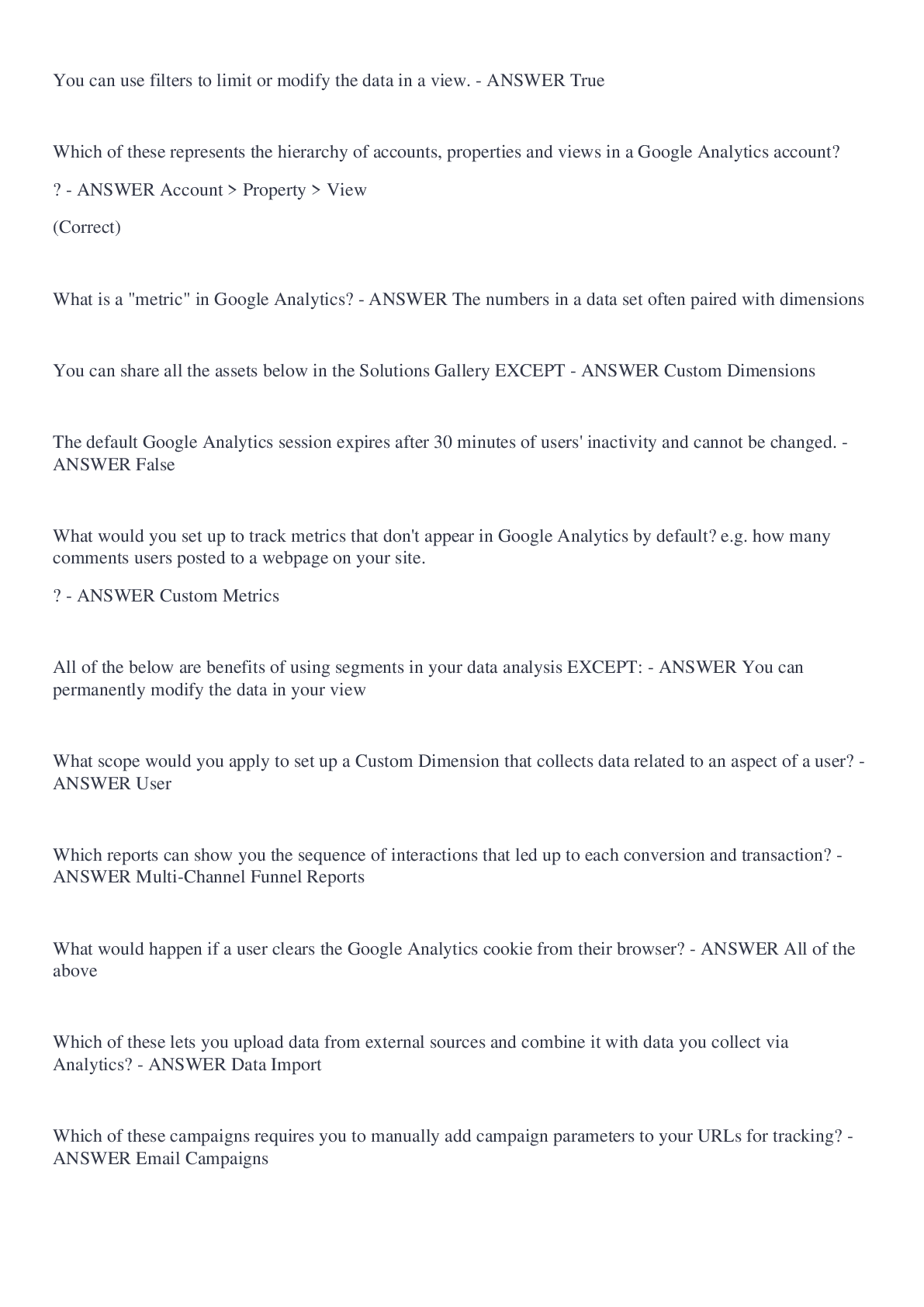
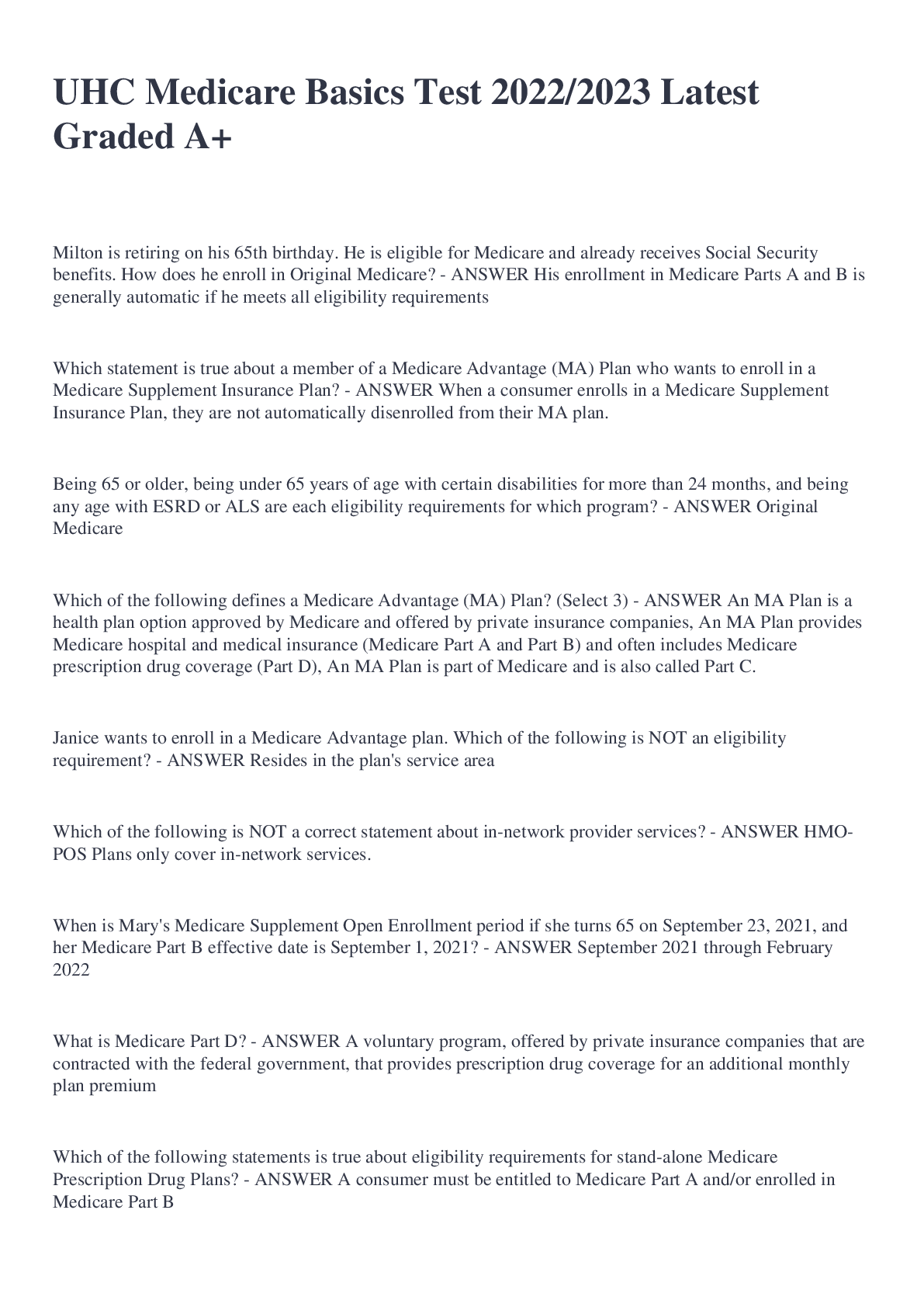
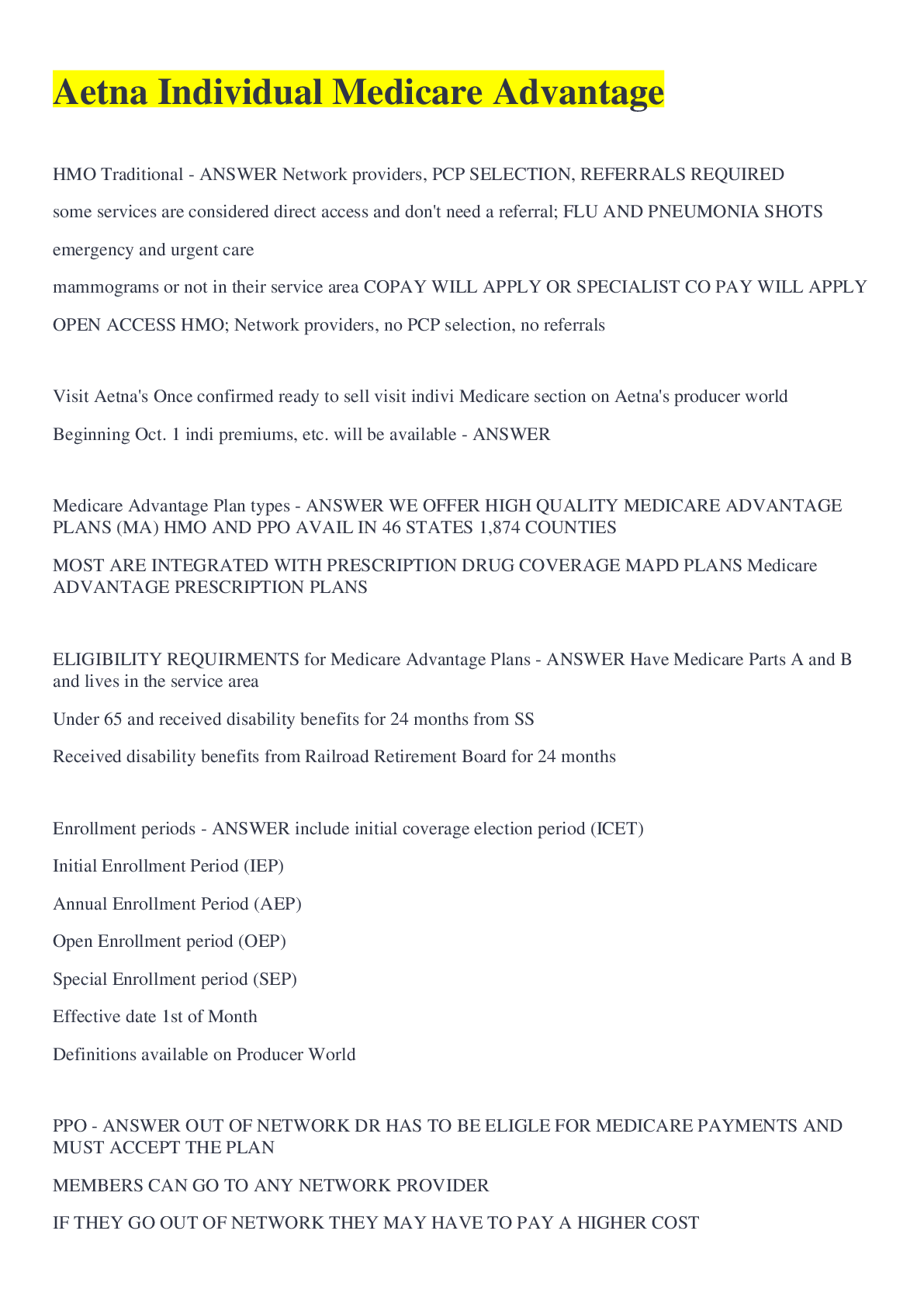


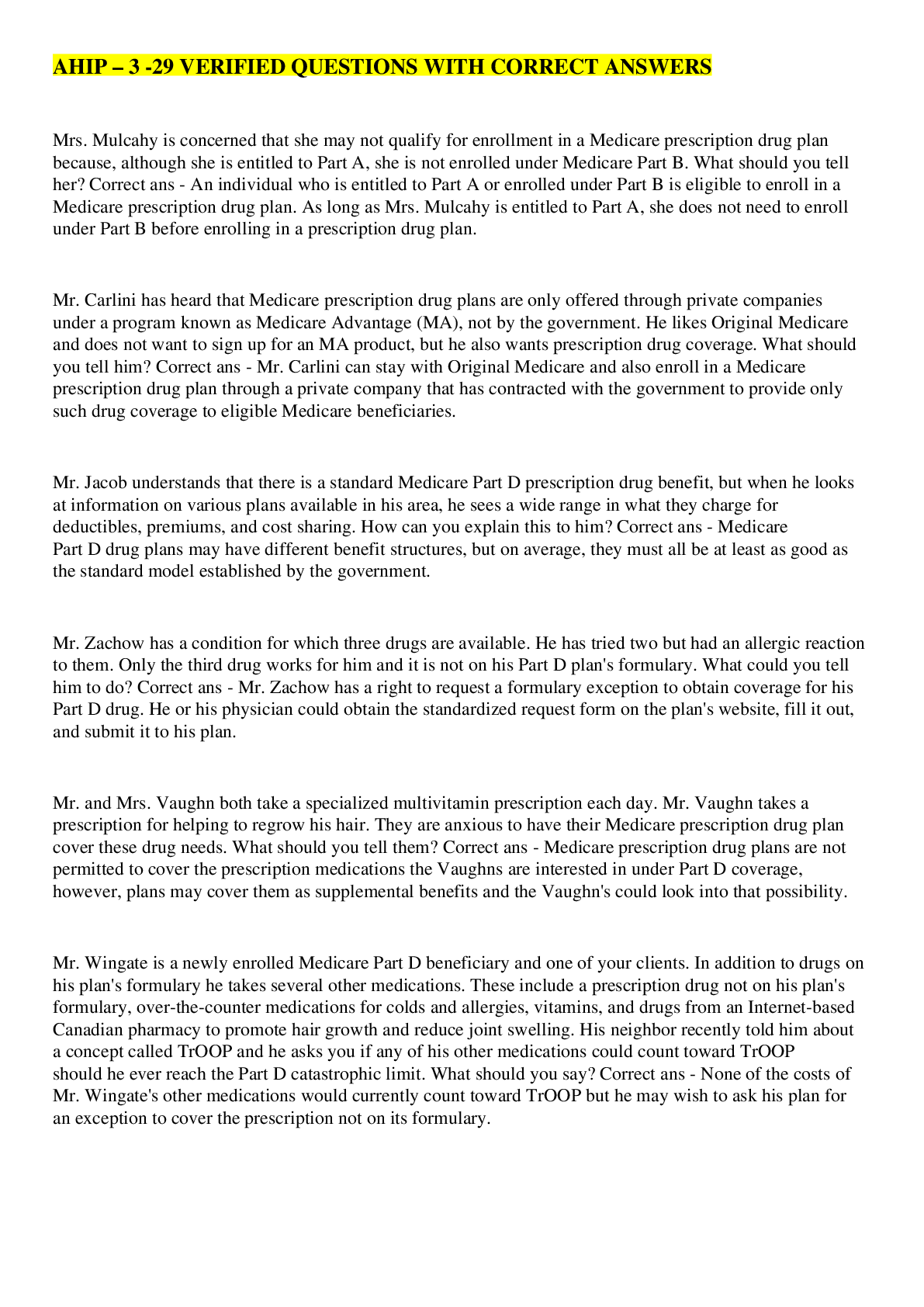

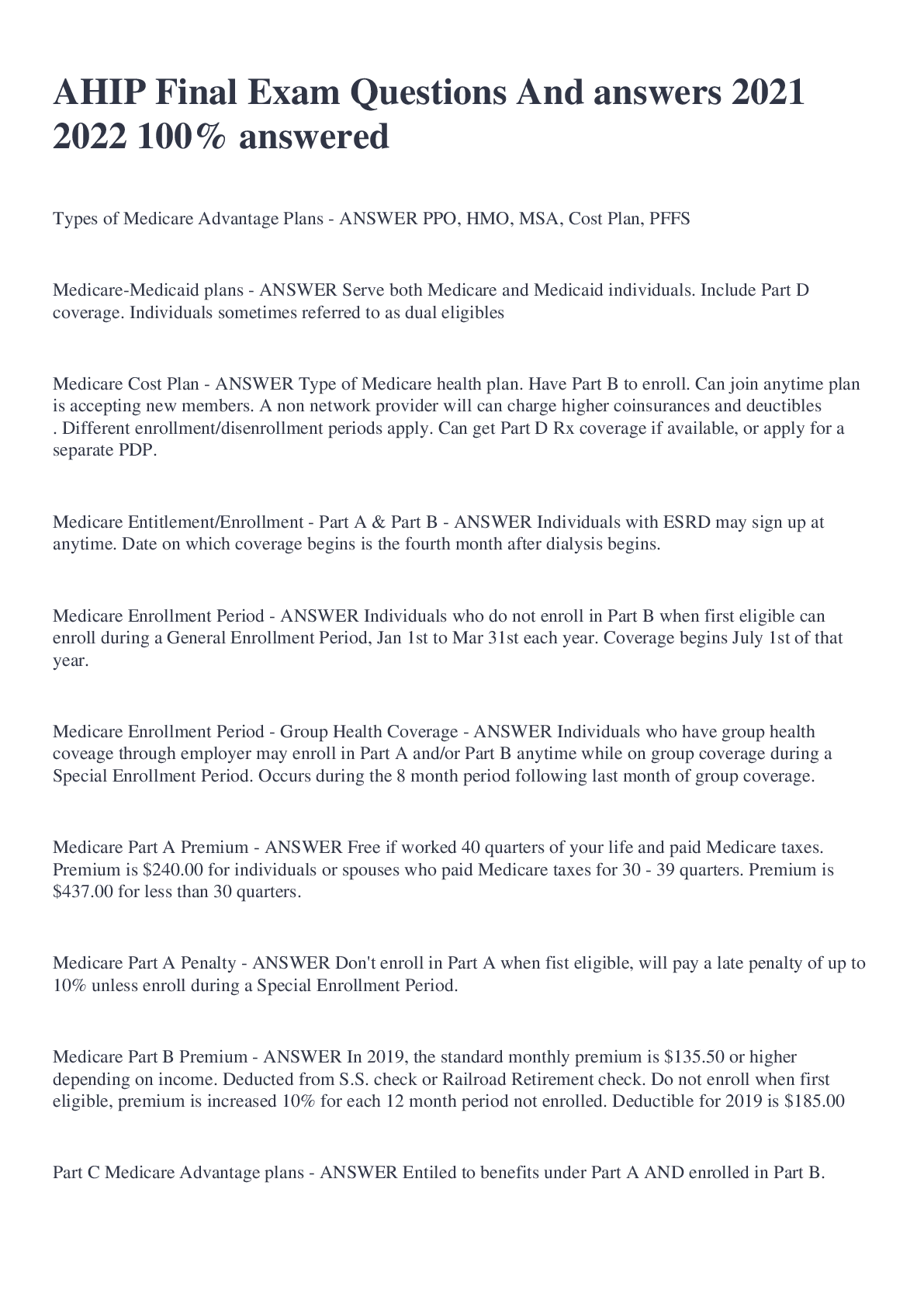
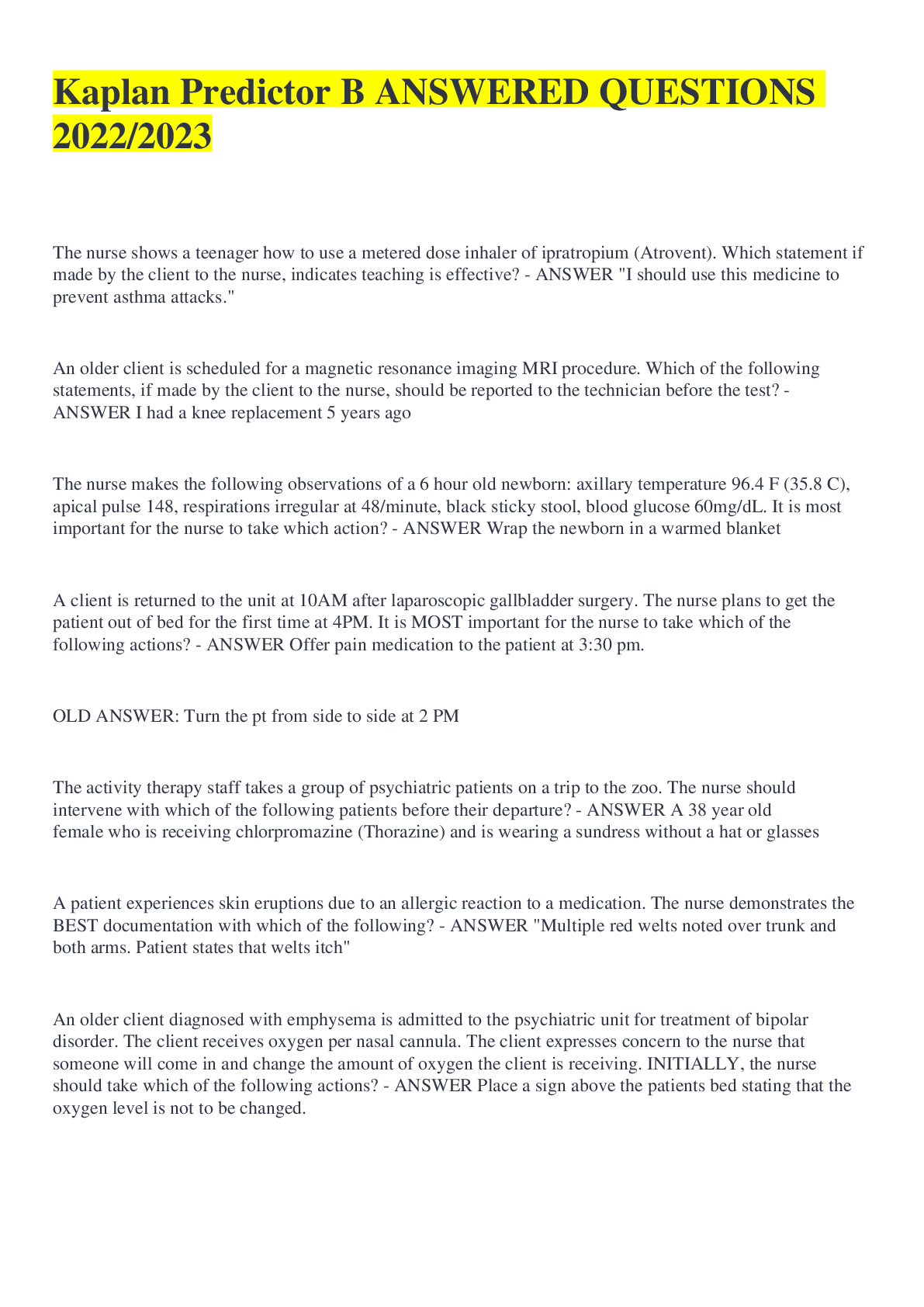
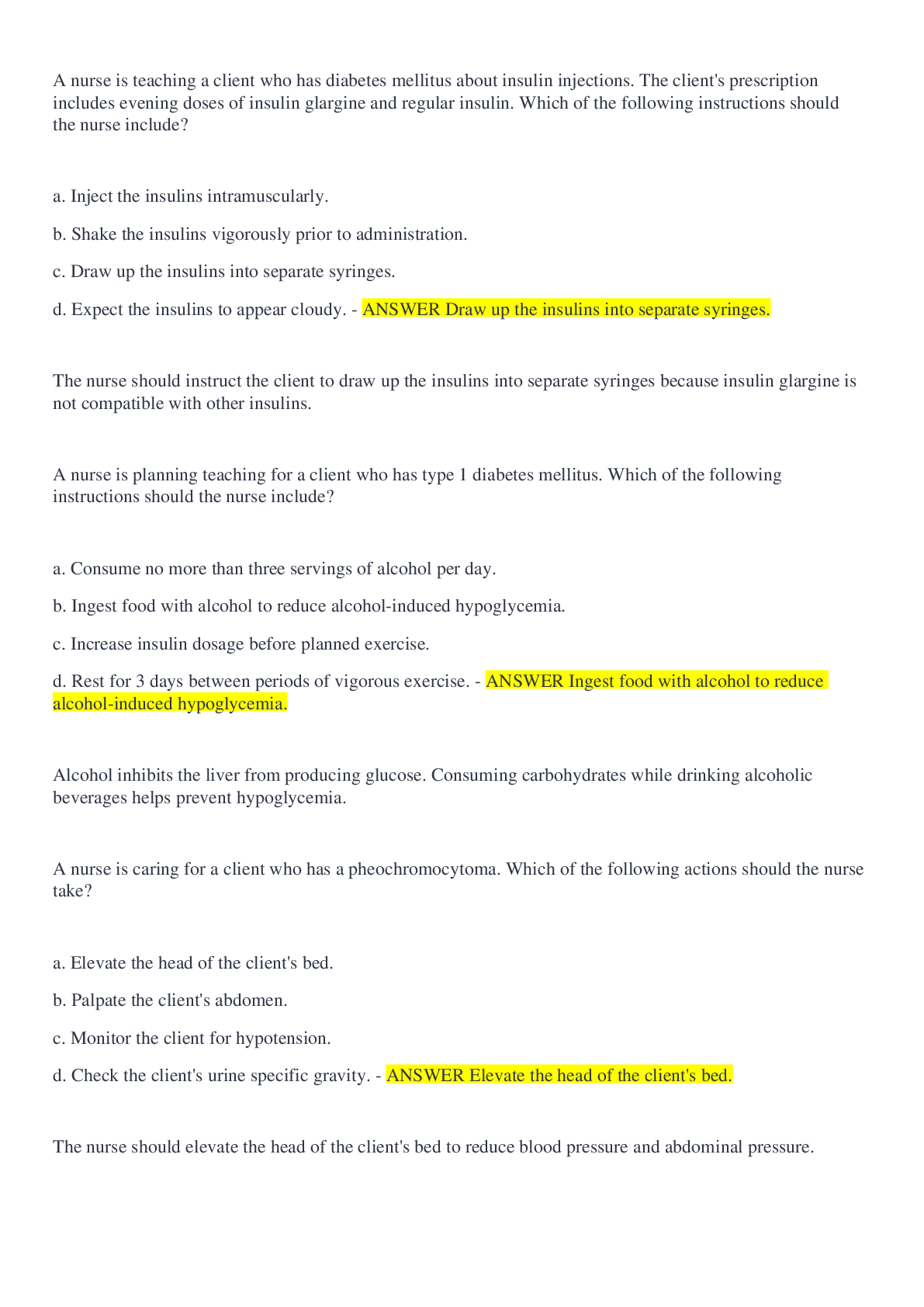
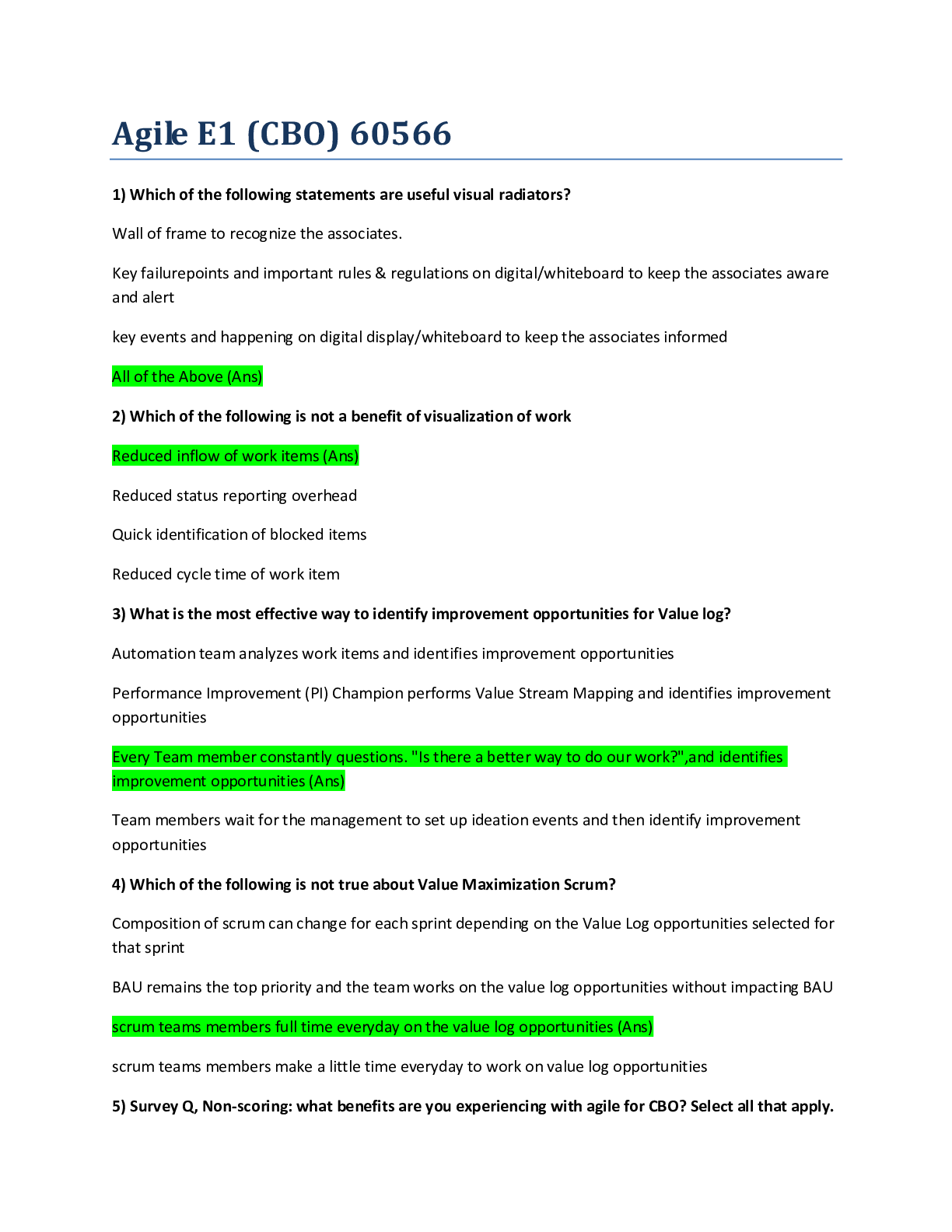



.png)

.png)

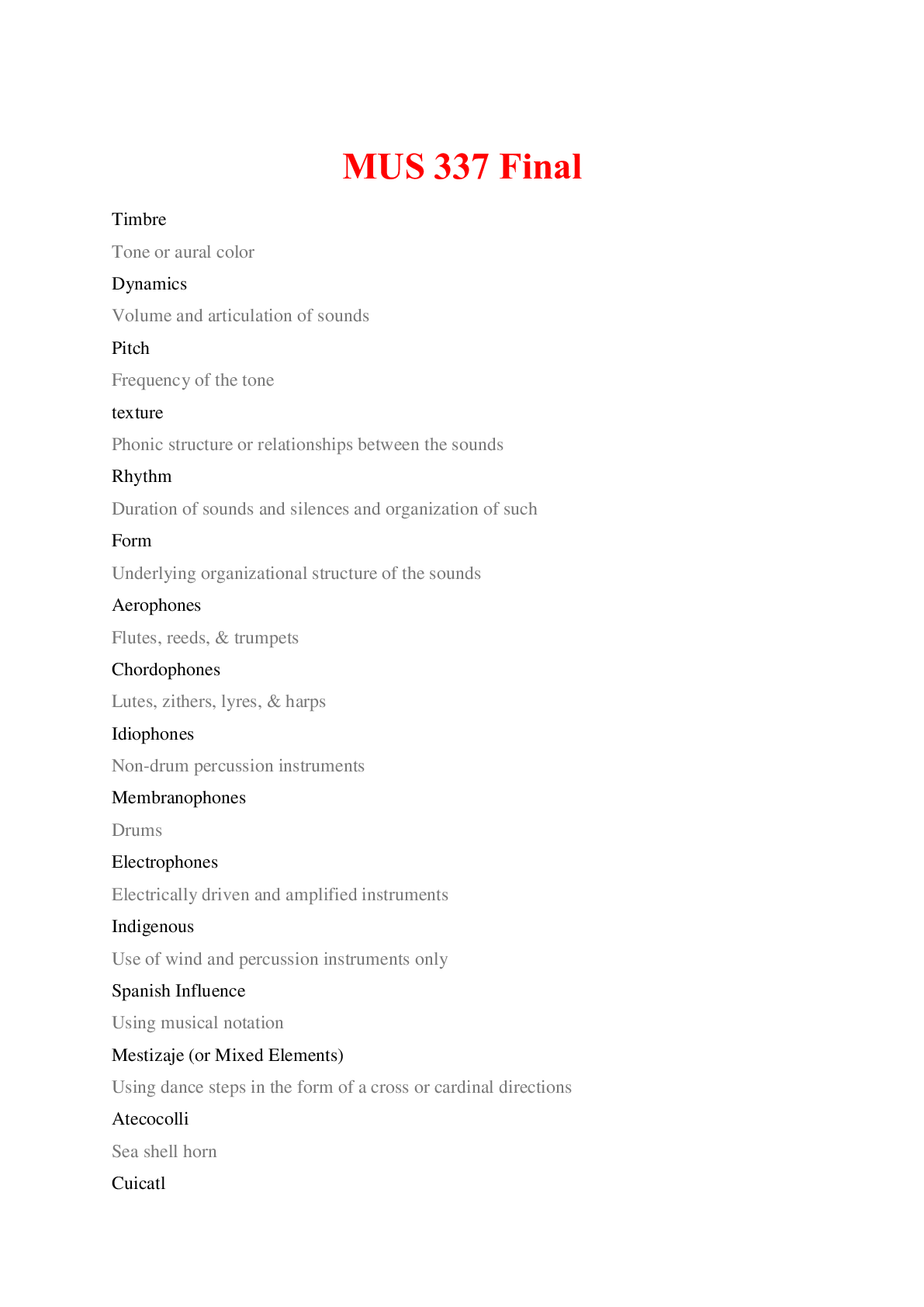


.png)
.png)

.png)




.png)

